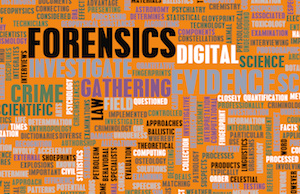The State of Connecticut has agreed to pay a death penalty expert witness $1.75 million to settle a fee dispute that arose after the unsuccessful lawsuit alleging racial discrimination in inmate executions. The expert witness bill, originally $3.5 million, represented six years of services in investigating discriminatory processes during capital cases in Connecticut.
Connecticut Inmates Allege Death Penalty Discrimination
Five of Connecticut’s eleven death row inmates filed a discrimination lawsuit alleging that black defendants were more likely to receive a death sentence than whites, particularly if the crime featured a black defendant and a white victim. Although the death penalty was outlawed in Connecticut in 2012, the eleven inmates already receiving a death sentence were unaffected, and the five plaintiffs sought to have their punishment commuted to life in prison without possibility of parole.
The Connecticut Public Defender’s office took on the task of representing the inmates – which is common practice in prisoner civil rights lawsuits – meaning that all expenses incurred as a result of the trial would be billed to the State. As part of the lawsuit, the Public Defender’s office reached out to Stanford law professor John Donohue III with a request to conduct a study of Connecticut’s death penalty sentencing and sit as an expert witness during the discrimination trial.
Death Penalty Expert Witness Study Suggests Discrimination
Donohue’s work as an expert witness for death row inmates involved a comprehensive study of all 205 death-penalty-eligible cases from 1973 to 2007 and found a difference in charge for black defendants, particularly ones who committed a crime against a white victim. Donohue’s work seemed to confirm the allegations that black defendants were more likely to receive death penalty sentencing than whites, suggesting that discrimination existed in Connecticut’s capital punishment system.
Donohue was challenged by the State’s Attorney’s expert witness, Stephan Michelson, who works for a research firm, and has expertise in conducting studies and analyzing data. Over the course of six years, Michelson offered a variety of critiques to Donohue’s work, forcing the plaintiffs’ expert to continually refine his research and data analysis before the case finally went to trial last October.
Judge Dismisses Connecticut Inmates Death Penalty Discrimination Challenge
Last October, Judge Samuel J. Sferrazza issued an opinion in the case that dismissed the plaintiffs’ allegations of racial discrimination in Connecticut death penalty cases. As part of the ruling, Judge Sferrazza found Dr. Donohue’s work as a plaintiff expert witness ultimately unconvincing to the issue of racial bias influencing death penalty outcomes. Writing that, “Doctor Donohue’s testimony was a relevant starting point, but a far cry from the proof necessary to establish the invalidity of the death sentence imposed upon the individual petitioners,” Judge Sferrazza determined that Donohue’s analysis fell short of the necessary proof for racial discrimination.
Although the case will continue to the Connecticut Supreme Court, Dr. Donohue submitted the invoices he compiled during his six year service as an expert witness, leaving the Public Defender’s office with a $3.5 million bill that the State was unwilling to pay.
Expert Witness Settles Fee Dispute for $1.75 Million
When Dr. Donohue’s expert witness invoice was first submitted to the Connecticut Public Defender Services Commission, officials refused to remit the full payment of $3.5 million. After negotiations with Donohue, the commission agreed to pay half the sum, $1.75 million, and requested the state legislature and governor to approve emergency funding to accommodate. Although the Connecticut Public Defender was unhappy with the process Donohue used in his billing, at no point did anyone allege that he had not done substantial work that was deserving of significant compensation – an opinion that resulted in the $1.75 million settlement.













